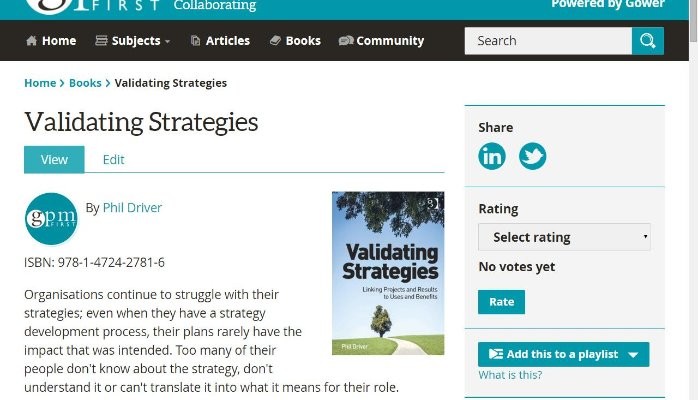
What makes capability and leadership development, project 'orphans'?
Beware projects that substitute (often with the best of intentions) great-sounding outputs for tangible benefits. The following extract from Phil Driver's Validating Strategies illustrates how capacity-building and leadership development are often 'orphaned results', unattached to any related benefits.
Many traditional strategies include actions which focus on ‘capacity-building’ or ‘capability-building’ in which employees within a provider organisation take part in training to build their skills. Because this training involves the development of an asset (trained staff), the training is a Project and the output of the training is a Result.
All too often this Result ends up being an Abandoned Orphan Result because the provider organisation has focused simply on ‘building capacity’ without any clear idea about how that capacity will enable Uses and hence lead to Benefits. In such situations, ‘capacity-building’ is seen as ‘a good thing to do’ so it is often done without any clear vision of how it will impact on Uses and Benefits.
The same applies to ‘leadership development’, a very popular concept in many private, public and third sector multi-stakeholder environments. Leadership development programmes repeatedly produce … leaders … which are just Abandoned Orphan Results unless these leaders have clear leadership roles (within Adopting Projects) to slot into. Far too often the freshly minted leaders return to their organisations into roles where they have few opportunities to lead. This isn’t good enough!
Before any Project is started it should be a requirement that the Project be part of a start-to-finish SubStrategy which shows explicitly how any Project will contribute, eventually, to desired Benefits. Any ‘capability-building’ or ‘leadership development’ Project should be explicitly clear how the new capabilities and leadership skills will contribute to Uses (probably indirectly via Adopting Projects).
If the trained staff or new leaders directly engage with end-users (for example as front-line service staff), the new capabilities will be being Used to help end-users create Benefits.
However, if – as is frequently the case with newly skilled staff and leaders – the skills are Adopted into new Projects, these Projects should be required to produce better Results as a consequence of these new skills than they would otherwise have done.
So Projects which involve enhancing providers’ capabilities frequently produce Orphan Results which need to be Adopted in order for end-user Benefits to ultimately be improved. Sadly, experience shows that traditionally and historically this is seldom the case, especially in the public sector.
Source: Validating Strategies - Linking Projects and Results to Uses and Benefits by Phil Driver, 2014, Gower Publishing, Farnham.
Read the whole of Validating Strategies and share your techniques for connecting projects and strategy at www.gpmfirst.com
Head of Benefits Management, New Hospital Programme I PMI UK Vice President
8yI love the "elegance" of Validating Strategies or OpenStrategies Ltd It works in a complex multi-stakeholder environment. Rather than dilute a strategy [an action plan with a rationale / what you are going to do and why you are going to do it] you spell it in simple terms such that people understand it. Phil describes a SubStrategy as containing: - the smallest amount of strategic information - that has the highest value - to the most people The PRUB sequence is Projects -> Results -> Uses -> Benefits. It this that provides the compelling context in which to undertake any and all projects ... Having recently published my own short article on this topic http://bit.ly/openstrategies and enjoyed various workshops and presentations from Phil Driver, over the last couple of weeks I remain more convinced than ever of the application of the OpenStrategies system.